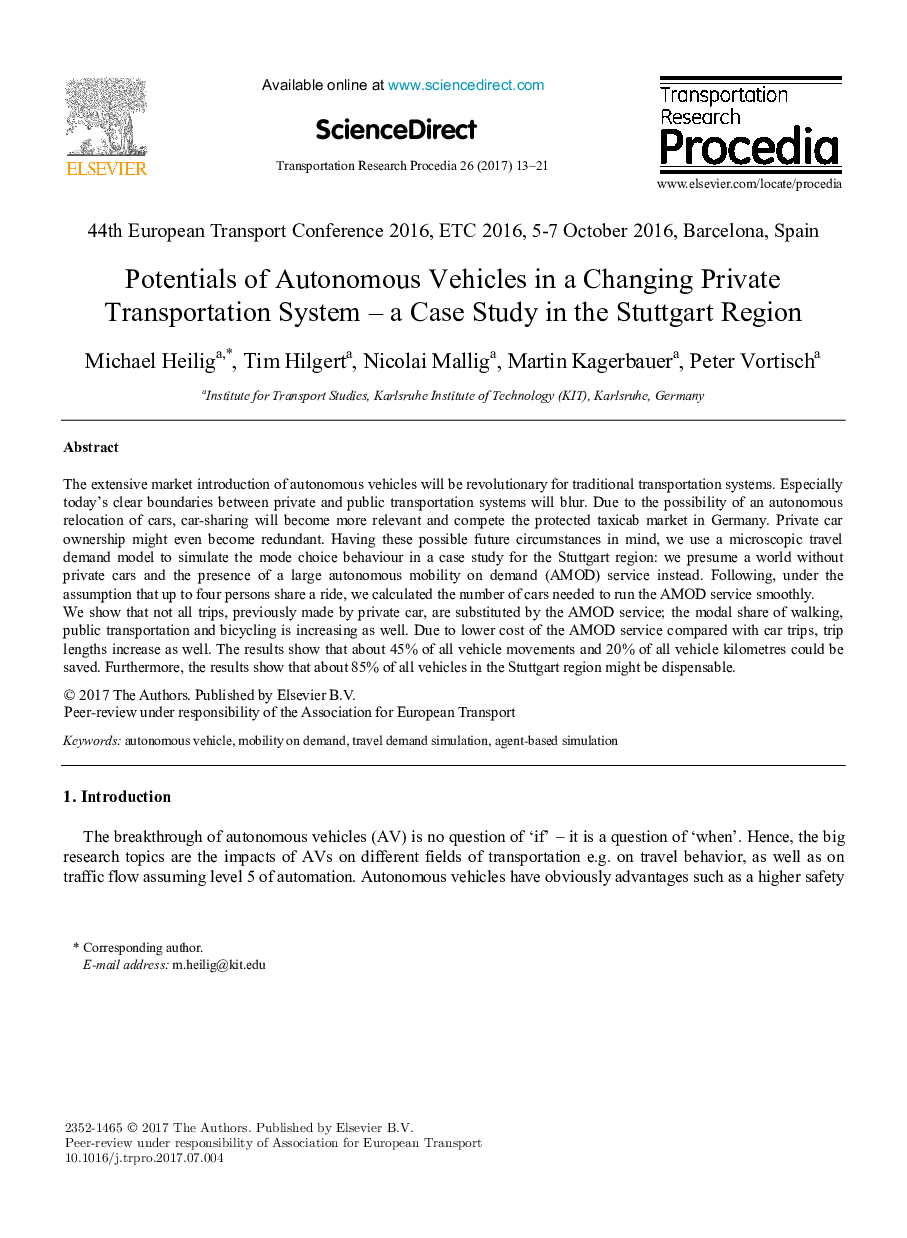| Article ID | Journal | Published Year | Pages | File Type |
|---|---|---|---|---|
| 5124997 | Transportation Research Procedia | 2017 | 9 Pages |
The extensive market introduction of autonomous vehicles will be revolutionary for traditional transportation systems. Especially today's clear boundaries between private and public transportation systems will blur. Due to the possibility of an autonomous relocation of cars, car-sharing will become more relevant and compete the protected taxicab market in Germany. Private car ownership might even become redundant. Having these possible future circumstances in mind, we use a microscopic travel demand model to simulate the mode choice behaviour in a case study for the Stuttgart region: we presume a world without private cars and the presence of a large autonomous mobility on demand (AMOD) service instead. Following, under the assumption that up to four persons share a ride, we calculated the number of cars needed to run the AMOD service smoothly. We show that not all trips, previously made by private car, are substituted by the AMOD service; the modal share of walking, public transportation and bicycling is increasing as well. Due to lower cost of the AMOD service compared with car trips, trip lengths increase as well. The results show that about 45% of all vehicle movements and 20% of all vehicle kilometres could be saved. Furthermore, the results show that about 85% of all vehicles in the Stuttgart region might be dispensable.
